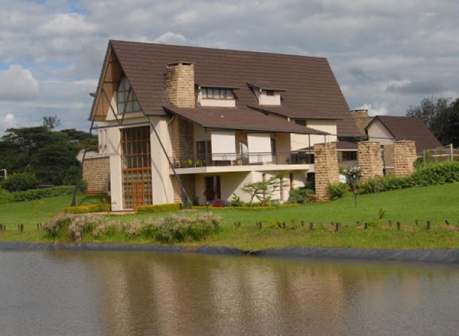
Over the last few years, there has been a lot of talk about green buildings and their importance. But fully compliant green buildings are still hard to come by in Kenya. Why are we not heeding the call despite all the campaigns to go green?
A green building is a structure that are energy and resource efficient as well as environmentally responsible. It enables the investor to save on time and cost, and at the same time create a more comfortable, more productive and healthier environment to live and work in. A green house is a big step forward in addressing climate change.
MYTH
Goodman Kazoora, the regional project manager at UN-Habitat, says one reason Kenyans aren’t building green is the misplaced notion that the venture is expensive.
READ MORE
Saved from the jaws of death: Munyakho's 13-year Saudi ordeal
Uhuru and fellow retirees can't fix the DRC
HIV patients now at the mercy of fate after 41,000 health staff fired
“There is a myth that building green is expensive, people put too much interest in the technology bit and forget that the key considerations are issues of design and orientation, which in real sense cost almost nothing,” says Goodman, adding that going green starts at the conception of a building, which partly includes doing site analysis and building orientation.
If, for instance, you orient your building wrongly, you have no business installing expensive solar panels on it. A building that is oriented well may not even need air conditioners, he says.
“Kenyans need to understand that the core issues of going green have zero cost. Cost comes in when technology is involved, but before venturing into technology the main aspects, which do not cost anything, must be met. We need to understand that green building is an entire culture; a way of life – from how we perceive things light lights, taps, appliances to how we deal with waste. The earlier we focus more on design than on technology, the better,” says Goodman.
These core design elements of green building include site analysis and building footprint, building orientation, daylighting and allocating of spaces within the building.
UN-Habitat offers free advice to individuals on how to make their buildings more sustainable in terms of design and orientation.
On finances, Goodman agrees that the upfront cost of putting up a green building could be 10 to 20 per cent higher than that of putting up a conventional one. He says investors should not confuse the cost of building with the value of the building.
The initial cost may be higher but the value of the building is higher as well.
“ Developers should realise they will recoup their investment many times within the first years of existence of their green-compliant building, unlike the case with a conventional building,” says Goodman.
NO LEGISLATION
Legislation is another big hurdle in the green building movement way. Goodman points out that there is no legislation in Kenya about green building, hence there is no demand for green buildings. People go green voluntarily, it is not a requirement anywhere.
Goodman is quick to add that the conservative nature of our people should not be left out when we look at why they are not building green. He says: “Our people would rather stick with the disastrous old than try a new good thing. They pick a few elements of green, especially the technology bit and market their buildings as sustainable and green, eco-friendly and such other marketing gimmicks.”
Elizabeth Chege, the chairperson of Kenya Green Buildings Association, echoes the concerns raised by Goodman, adding that the organisation is working with UN-Habitat, the government and other stakeholders to push Kenya’s green building agenda forward.
Kenya Green Buildings Society is Kenya’s official chapter of the World Green Building Council. It is an independent not-for-profit organisation that raises awareness on the benefits of green buildings. The society also recognises and awards industry leaders who excel in green building.
What is being done to deal with these challenges? UN-Habitat has written a manual, Sustainable Building Design Principles for Tropical Countries, on the core design issues of green building in relation to East Africa.
In an effort to build professionalism, the organisation has also helped in reviewing curriculum in 16 schools of architecture and construction management across East Africa — including the University of Nairobi, Jomo Kenyatta University of Agriculture and Technology and Technical University of Kenya.

